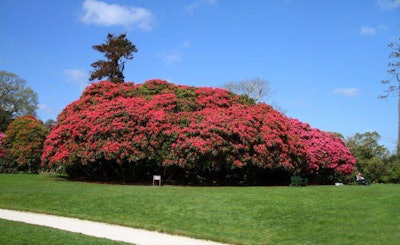 This giant rhododendron bush is one of the ancient species that was brought by Joseph Hooker.
This giant rhododendron bush is one of the ancient species that was brought by Joseph Hooker.Photo: The Lost Gardens of Heligan
Some ancient rhododendron species that were on the verge of extinction now have a second chance, thanks to a micro-propagation project in the United Kingdom.
In 1851, multiple species of rhododendron were brought back from the Himalayas by plant hunter Joseph Hooker. These plants found a home at The Lost Gardens of Heligan in Cornwall, England.
The botanical garden received National Collection Holder status by Plant Heritage for its unique collection of camellias and rhododendrons in 2008, but soon these species’ existence became threatened.
Infected with Phytophthora ramorum, the culprit behind sudden oak death, the rhododendrons were promised certain death. In an attempt to save their beloved plants, The Lost Gardens helped fund a micro-propagation project led by Ros Smith, laboratory manager at Duchy College in Cornwall.
This process successfully cloned new, disease-free versions of the rare and historic species of rhododendron.
“The story of the Heligan rhododendrons is truly a great one,” Iain Davies, Heligan’s head of gardens and estate, said on the garden’s website. “The micro-propagation of our historic rhododendrons not only means that we can replace plants that have been lost since the project began eight years ago, it also means that we can re-populate the gardens with the exact species first introduced in 1851.”
The project has been considered a breakthrough and the science behind it is expected to be shared to save other endangered plant species.
“This work is of national importance,” Smith said. “A lot of the plants we are working with were original introductions to this country from the 1850s. There are also some rare hybrids and some unique plants that are under threat for a number of different reasons.”
The Lost Gardens originally belonged to the Tremayne family but fell into neglect after World War I, when 16 of the 22 gardeners who had cared for it, died in battle. It wasn’t until the 1990s that the gardens were re-discovered and restored to their former glory.
Aside from rare rhododendrons, Heligan is also known for its iconic Mud Maid, Giant’s Head, and Grey Lady sculptures.









